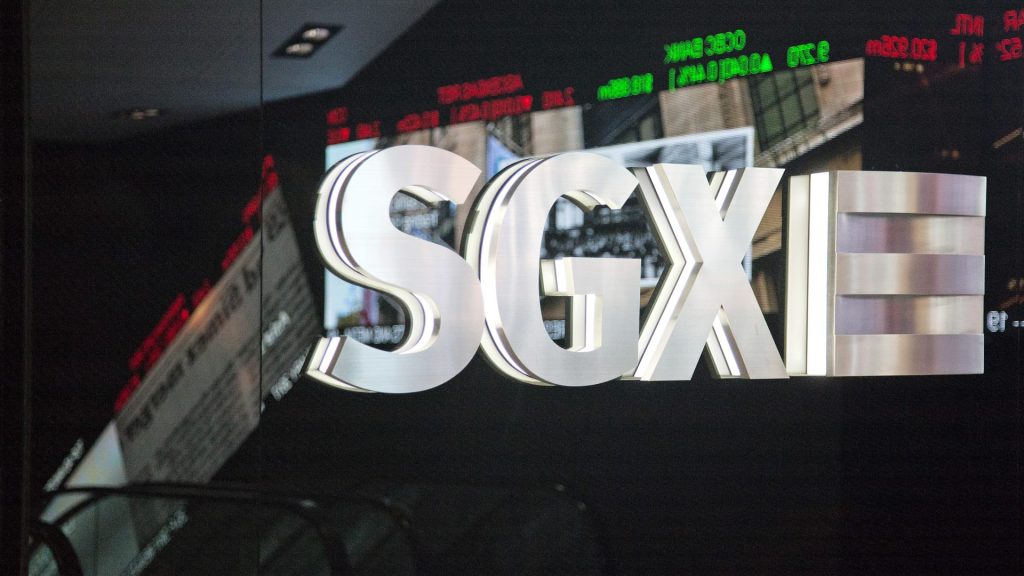Navigating the Global Markets: Vietnam’s Upgrade, Singapore’s Peak, and Trump’s Tariff
Global markets are a complex tapestry woven with threads of economic growth, geopolitical events, and policy decisions. Staying informed about these developments is crucial for investors, businesses, and anyone seeking to understand the forces shaping our financial world. This article dives into recent market movements, focusing on JPMorgan’s optimistic outlook on Vietnam, Singapore’s record-breaking performance, Trump’s proposed copper tariff, and other key economic indicators from Asia-Pacific.
JPMorgan Turns Bullish on Vietnam: An Overweight Rating for Stocks
Vietnam’s Trade Deal and Economic Growth Spur Optimism
JPMorgan Chase & Co. has upgraded its outlook on Vietnamese stocks to “overweight,” signaling a positive shift in its investment strategy for the Southeast Asian nation. This decision comes on the heels of Vietnam securing a significant trade agreement with the United States, setting a tariff rate of 20%. This landmark deal positions Vietnam as the first ASEAN country to achieve such favorable terms with the U.S.
According to a research note penned by JPMorgan analysts led by Khoi Vu, this trade agreement, coupled with Vietnam’s robust economic growth, particularly the impressive 8% GDP growth in the second quarter of 2025, warrants a more bullish stance on the country’s equities. JPMorgan has set a new base target for the VN-Index at 1,500 by year-end, with a “bull” target reaching as high as 1,600.
VN-Index Responds Positively
The market responded favorably to the news, with the VN-Index trading 0.78% higher, reaching 1,442.29 as of Thursday afternoon local time. This positive momentum reflects investor confidence in Vietnam’s economic prospects and the potential for further growth.
Analysis: A Pragmatic Reassessment of Vietnam’s Potential
JPMorgan’s upgrade appears to be a well-reasoned response to tangible economic developments. The trade deal with the U.S. is undeniably a significant catalyst. It provides Vietnamese businesses with enhanced access to the world’s largest economy, fostering export growth and attracting foreign investment. The 8% GDP growth figure further solidifies the narrative of a thriving economy. This growth is likely driven by a combination of factors, including increased manufacturing activity, a rising middle class, and government policies aimed at attracting foreign direct investment.
However, investors should always exercise caution. While Vietnam’s growth prospects appear promising, several factors could influence its trajectory. Global economic headwinds, shifts in trade policy, and domestic challenges such as infrastructure development and regulatory hurdles could all impact future performance.
Key Takeaway: JPMorgan’s upgrade is a positive sign for Vietnam’s economic future, but investors should conduct thorough due diligence and consider potential risks before making investment decisions.
Singapore’s Stock Market Reaches New Heights
Straits Times Index Breaks Records
Singapore’s benchmark Straits Times Index (STI) has reached a new record high, marking its fourth consecutive day of gains. As of Thursday morning, the index climbed 0.47% to reach 4,077.41 points, according to data from LSEG (formerly Refinitiv).
Factors Driving Singapore’s Success
While the specific drivers of this recent surge require deeper analysis, Singapore’s strong economic fundamentals, strategic location, and reputation as a stable and business-friendly environment likely play a significant role. Singapore’s robust financial sector, advanced infrastructure, and skilled workforce have consistently attracted foreign investment and facilitated economic growth.
Analysis: A Beacon of Stability in a Turbulent Region
Singapore’s consistent performance is a testament to its sound economic policies and resilience. As a small, open economy, Singapore is particularly vulnerable to global economic fluctuations. However, its proactive approach to economic diversification, investment in innovation, and commitment to free trade have allowed it to navigate challenging periods effectively.
The Straits Times Index reaching record highs could be attributed to several factors, including:
- Strong Corporate Earnings: Positive earnings reports from major Singaporean companies could be boosting investor confidence.
- Increased Foreign Investment: Singapore’s safe-haven status and attractive investment climate may be attracting capital from investors seeking stability amidst global uncertainty.
- Sector-Specific Growth: Certain sectors, such as technology or finance, could be experiencing strong growth, contributing to the overall positive performance of the index.
Key Takeaway: Singapore’s stock market continues to demonstrate resilience and growth potential, making it an attractive destination for investors seeking stability and long-term returns.
Trump’s Proposed Copper Tariff: A Controversial Move
50% Tariff on Copper Imports Proposed
Former U.S. President Donald Trump has announced his intention to impose a 50% tariff on copper imports, effective August 1, 2025. The decision, according to Trump, was based on a national security assessment.
Rationale Behind the Tariff
In a post on Truth Social, Trump argued that copper is a critical material for various industries, including semiconductors, aerospace, defense, and battery production. He emphasized its importance for national security, highlighting its use in military applications such as ammunition, missile defense systems, and hypersonic weapons.
Potential Impacts of the Tariff
The proposed tariff has significant implications for the copper market and various industries reliant on the metal. A 50% tariff could lead to:
- Increased Copper Prices: Domestic copper prices in the U.S. could rise significantly, impacting manufacturers and consumers.
- Reduced Competitiveness: U.S. manufacturers relying on copper could face higher production costs, making them less competitive in the global market.
- Trade Retaliation: Other countries could retaliate with tariffs on U.S. exports, potentially escalating trade tensions.
- Disruption to Supply Chains: The tariff could disrupt existing supply chains and force companies to seek alternative sources of copper, potentially impacting efficiency and cost.
Analysis: A Debate on National Security vs. Economic Impact
Trump’s rationale for the tariff centers on national security concerns, arguing that domestic copper production is crucial for maintaining a strong defense industry. However, critics argue that the tariff could harm the U.S. economy by increasing costs for manufacturers and consumers.
There is a legitimate debate to be had about the balance between national security and economic interests. While ensuring a secure supply of critical materials is undoubtedly important, policymakers must carefully consider the potential economic consequences of protectionist measures like tariffs.
Alternative approaches, such as investing in domestic copper production, stockpiling strategic reserves, or fostering collaboration with trusted allies, may offer more effective and less disruptive solutions to addressing national security concerns.
Key Takeaway: Trump’s proposed copper tariff is a controversial policy with potentially far-reaching economic consequences. The debate over national security versus economic impact highlights the complexities of trade policy.
Bank of Korea Holds Rates Steady
Policy Rate Remains at 2.5%
The Bank of Korea (BOK) has decided to maintain its policy rate at 2.5%, keeping it at an almost three-year low. This decision reflects the central bank’s cautious approach to managing economic growth and inflation.
Economic Context
South Korea’s economy experienced a contraction of 0.2% quarter-on-quarter in the first three months of the year, primarily due to weak construction activity and softening export growth. On a year-on-year basis, the economy remained flat.
Analysis: Navigating a Delicate Balancing Act
The BOK’s decision to hold rates steady suggests that it is prioritizing economic stability amidst signs of weakness. While the economy is not experiencing rapid growth, the central bank may be wary of further stimulating demand, given concerns about inflation and potential risks to financial stability.
Holding rates steady provides stability for businesses and consumers, potentially encouraging investment and spending. However, it also means that the BOK is not actively trying to boost economic growth through monetary policy.
Key Takeaway: The Bank of Korea’s decision reflects a cautious approach to managing economic growth and inflation in a challenging environment.
Asia-Pacific Markets Open Mixed
Varied Performance Across Indices
Asia-Pacific stock markets opened with mixed results, indicating a degree of uncertainty among investors.
- Japan: The Nikkei 225 slipped 0.45%, while the Topix lost 0.54%.
- South Korea: The Kospi climbed 0.24%, and the small-cap Kosdaq rose 0.44%.
- Australia: The S&P/ASX 200 was 0.51% higher.
Opening Calls from Singapore
Futures contracts for the Nikkei 225 suggested a higher open compared to its previous close. Futures for the Hang Seng index pointed to a slightly weaker open, while futures for the S&P/ASX 200 suggested a slightly higher start.
Analysis: A Reflection of Global Uncertainties
The mixed performance across Asia-Pacific markets likely reflects a combination of factors, including:
- Global Economic Outlook: Concerns about a potential global recession or slowdown may be weighing on investor sentiment.
- Geopolitical Tensions: Ongoing geopolitical risks, such as trade disputes or regional conflicts, could be contributing to market volatility.
- Company-Specific News: Earnings reports and other company-specific news events can influence individual stock prices and overall market performance.
- Interest Rate Expectations: Expectations about future interest rate movements by central banks can impact investor decisions.
Key Takeaway: The mixed opening across Asia-Pacific markets underscores the ongoing uncertainty in the global economic landscape.
U.S. Stock Futures Open Little Changed
Stable Futures Market
U.S. stock futures were relatively unchanged on Wednesday evening, suggesting a lack of strong directional momentum in the market.
Nasdaq Composite Reaches Record High
The Nasdaq Composite closed at an all-time record high on Wednesday afternoon, driven by strong performance in technology stocks. The S&P 500 and Dow Jones Industrial Average also gained ground.
Analysis: Tech Sector Dominance
The Nasdaq’s record high highlights the continued dominance of the technology sector in the U.S. stock market. Companies like Apple, Microsoft, Amazon, and Google have been key drivers of growth in recent years, and their performance continues to influence overall market sentiment.
Key Takeaway: The stable U.S. stock futures market and the Nasdaq’s record high reflect a complex interplay of factors, including technology sector strength and broader economic uncertainties.
Conclusion: Navigating a Dynamic Global Landscape
The global markets are constantly evolving, influenced by a myriad of economic, political, and technological forces. Staying informed about these developments is essential for making sound investment decisions and navigating the complexities of the global economy.
From JPMorgan’s optimistic outlook on Vietnam to Singapore’s record-breaking performance and Trump’s proposed copper tariff, the events discussed in this article highlight the dynamic nature of the global marketplace. By understanding these trends and their potential implications, investors and businesses can better position themselves to succeed in an increasingly interconnected world. The importance of critical and objective analysis of market movements is paramount to success in financial undertakings.





